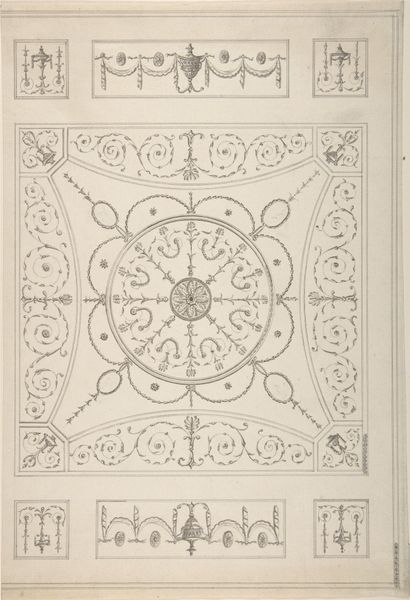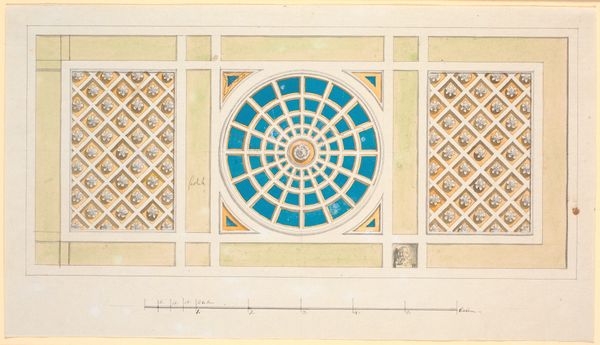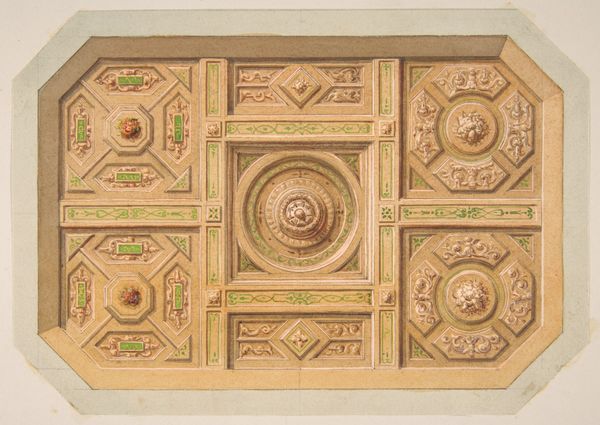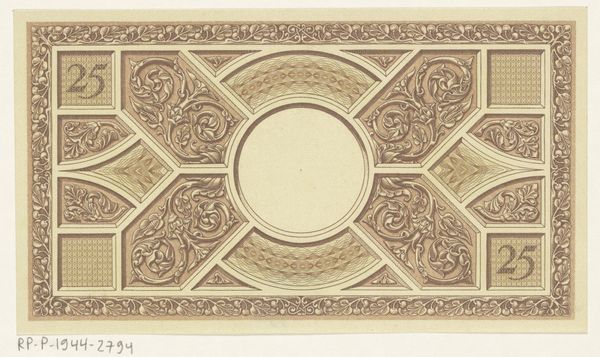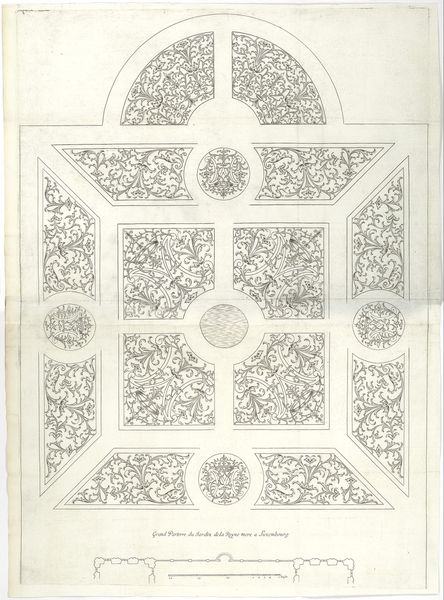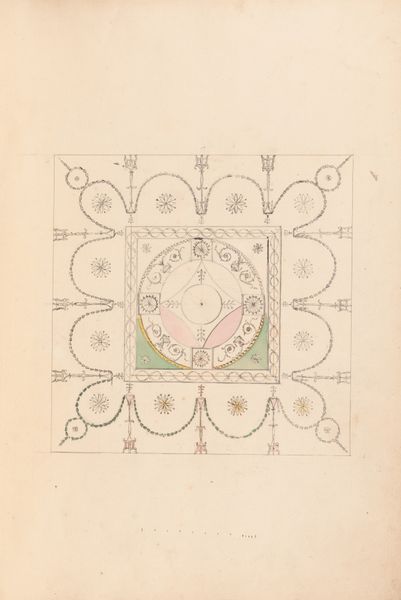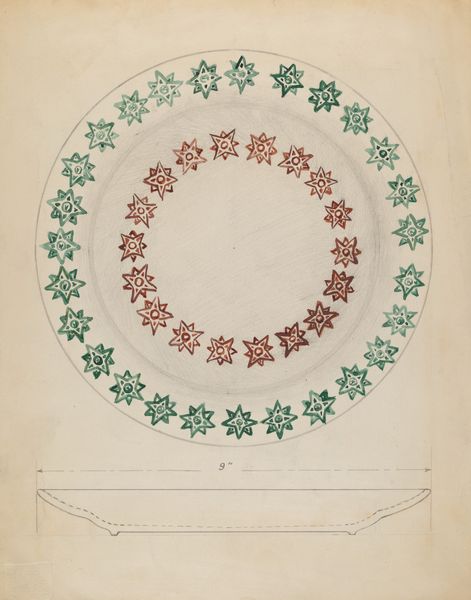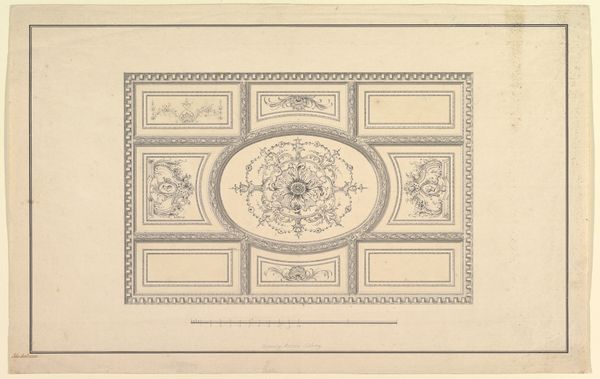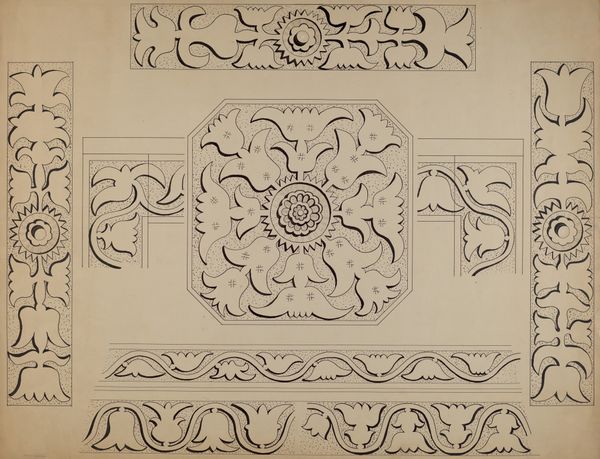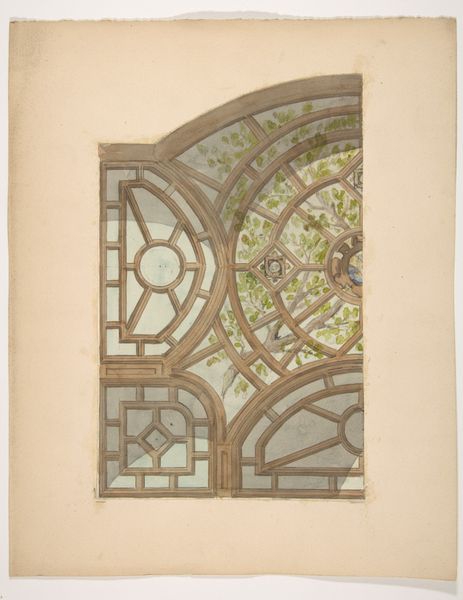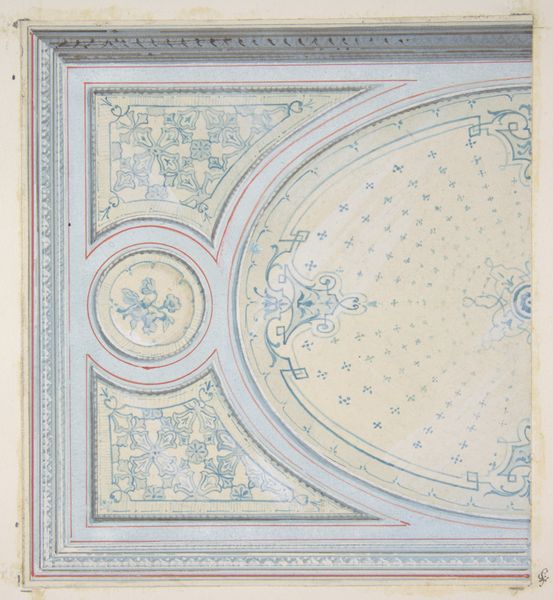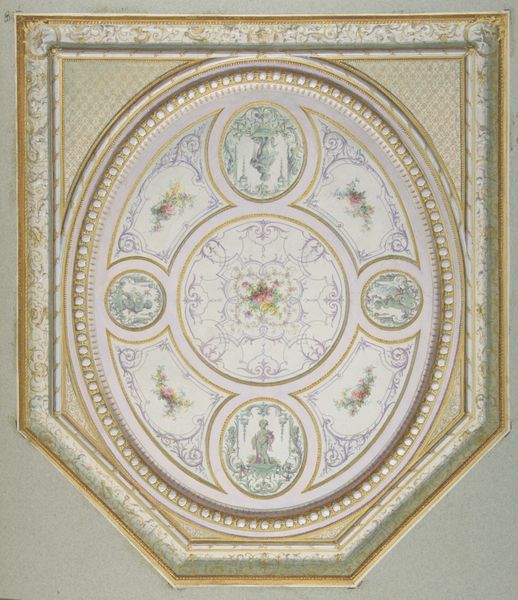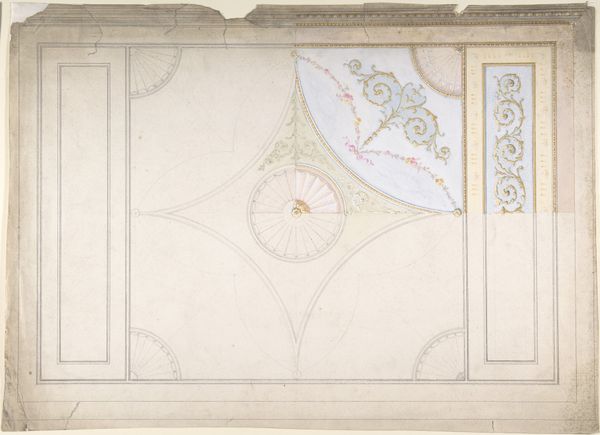
Udkast til et loft med hvælvet midterparti i violet og gult 1743 - 1809
0:00
0:00
drawing, tempera
#
drawing
#
tempera
#
11_renaissance
#
geometric
#
decorative-art
Dimensions: 408 mm (height) x 240 mm (width) (bladmaal)
Curator: This piece emanates such a precise stillness; it almost hums with quiet order. Editor: Indeed. What we're looking at here is titled "Udkast til et loft med hvælvet midterparti i violet og gult," or "Draft for a ceiling with vaulted centre section in violet and yellow." Nicolai Abildgaard executed it sometime between 1743 and 1809. Curator: Abildgaard's geometric rigour here speaks volumes. The diamond patterning of the central dome creates a mesmerizing field of receding forms, particularly interesting, isn’t it, as an exercise in perspective and the inherent tension between two-dimensional surface and three-dimensional illusion. The tempera adds an ethereal quality to what could be cold and rational. Editor: He clearly drew inspiration from classical decorative schemes but remember Abildgaard’s milieu. He worked within a period defined by the influence of the Royal Danish Academy of Fine Arts, and would have been responding to the pervasive Enlightenment ideals permeating Danish artistic life, striving to democratize knowledge by way of geometrical figures and the classical styles. Curator: Observe, too, how the violet and yellow palette dances against each other, setting the symmetry of the work to a vibrant aesthetic key; further accented through tempera work. Editor: His stylistic choices were shaped not just by aesthetics but by function. This sketch offered potential clients, or the royal court of the time, a clear idea of how they could imbue state spaces with architectural magnificence befitting a powerful era, while staying within classical traditions. Curator: Yes, the geometry is undeniable, its forms interlocking as symbolic visual languages of its time! I notice how Abildgaard balances his presentation by playing on mathematical proportions to bring this room together. The tension of the central figure provides visual clues as to what would later inform painting throughout the Neoclassical Movement, making for an architectural tour de force. Editor: He was, ultimately, contributing to the construction of royal image and power using geometrical elegance as the principal tool to achieve that goal, which is perhaps not so apparent at first glance, but essential for interpreting this work. What is initially interesting is now far more interesting due to our closer inspection of Abildgaard’s choices. Curator: Absolutely! Now one can fully appreciate the complexity beneath its harmonious arrangement of colours and geometrical figures.
Comments
No comments
Be the first to comment and join the conversation on the ultimate creative platform.
